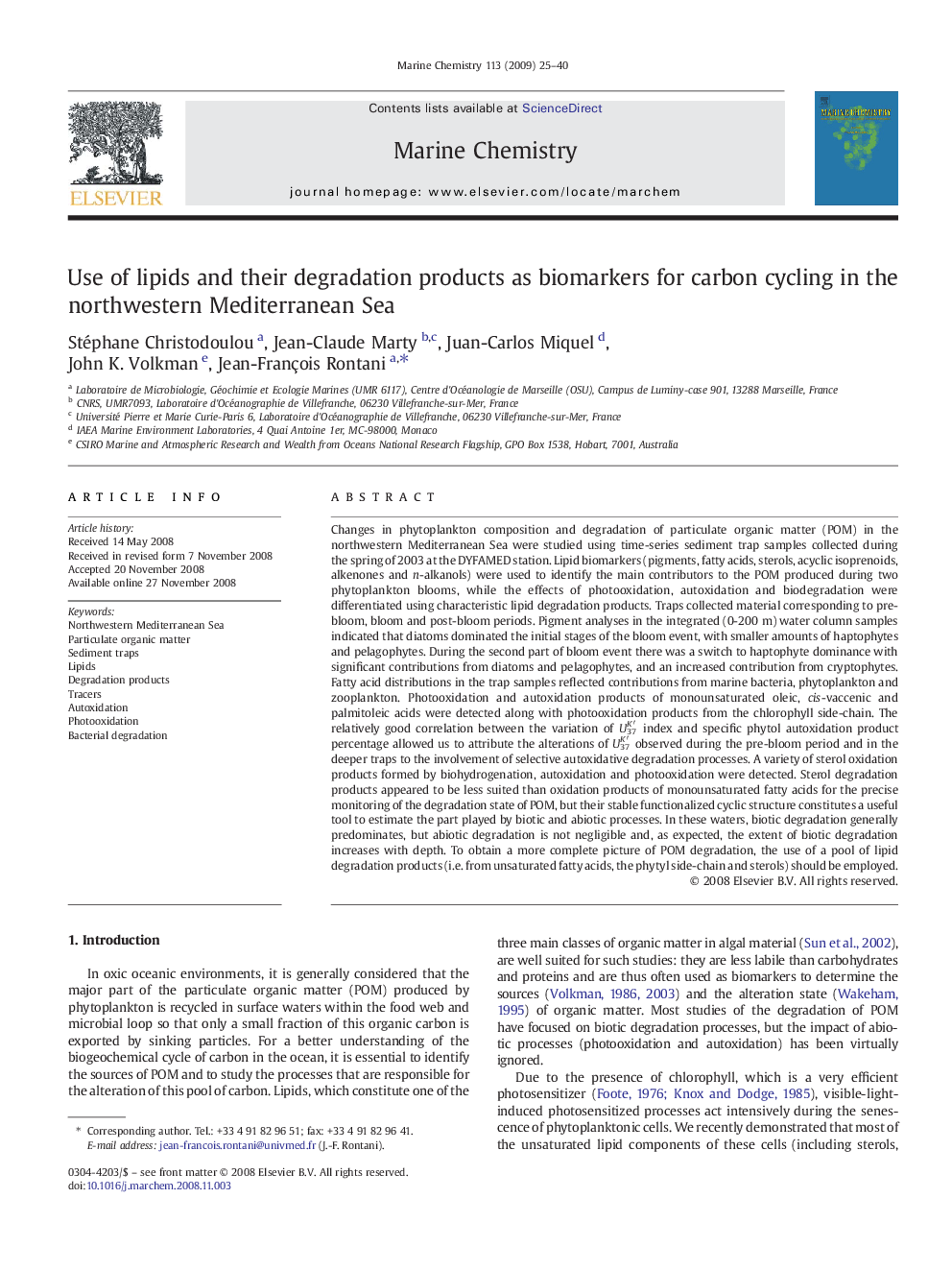| Article ID | Journal | Published Year | Pages | File Type |
|---|---|---|---|---|
| 1261842 | Marine Chemistry | 2009 | 16 Pages |
Changes in phytoplankton composition and degradation of particulate organic matter (POM) in the northwestern Mediterranean Sea were studied using time-series sediment trap samples collected during the spring of 2003 at the DYFAMED station. Lipid biomarkers (pigments, fatty acids, sterols, acyclic isoprenoids, alkenones and n-alkanols) were used to identify the main contributors to the POM produced during two phytoplankton blooms, while the effects of photooxidation, autoxidation and biodegradation were differentiated using characteristic lipid degradation products. Traps collected material corresponding to pre-bloom, bloom and post-bloom periods. Pigment analyses in the integrated (0-200 m) water column samples indicated that diatoms dominated the initial stages of the bloom event, with smaller amounts of haptophytes and pelagophytes. During the second part of bloom event there was a switch to haptophyte dominance with significant contributions from diatoms and pelagophytes, and an increased contribution from cryptophytes. Fatty acid distributions in the trap samples reflected contributions from marine bacteria, phytoplankton and zooplankton. Photooxidation and autoxidation products of monounsaturated oleic, cis-vaccenic and palmitoleic acids were detected along with photooxidation products from the chlorophyll side-chain. The relatively good correlation between the variation of U37K′ index and specific phytol autoxidation product percentage allowed us to attribute the alterations of U37K′ observed during the pre-bloom period and in the deeper traps to the involvement of selective autoxidative degradation processes. A variety of sterol oxidation products formed by biohydrogenation, autoxidation and photooxidation were detected. Sterol degradation products appeared to be less suited than oxidation products of monounsaturated fatty acids for the precise monitoring of the degradation state of POM, but their stable functionalized cyclic structure constitutes a useful tool to estimate the part played by biotic and abiotic processes. In these waters, biotic degradation generally predominates, but abiotic degradation is not negligible and, as expected, the extent of biotic degradation increases with depth. To obtain a more complete picture of POM degradation, the use of a pool of lipid degradation products (i.e. from unsaturated fatty acids, the phytyl side-chain and sterols) should be employed.
